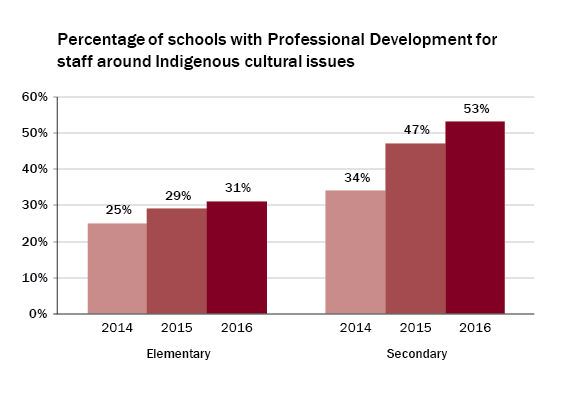Indigenous education in provincially funded schools
While public attention is most often focused on the challenges faced by on-reserve schools, the majority (82%) of First Nations, Métis and Inuit students attend provincially funded schools.
Ontario’s Ministry of Education and school boards across the province have focused on two priorities in Indigenous education:
- Improving achievement and graduation rates for Indigenous students
- Integrating educational opportunities so that all students have increased knowledge about the cultures, traditions, and perspectives of Indigenous peoples.
While there has been marked progress toward embedding Indigenous education into Ontario’s schools, data from the 2016 annual report on schools show that there are still challenges to be addressed:
- Only 10% of elementary schools and 30% of secondary schools offer Indigenous cultural ceremonies.
- 29% of elementary schools and 49% of secondary schools report Indigenous guest speakers.
By developing their knowledge of Indigenous histories, cultures, perspectives, and approaches to learning, teachers are better able to support Indigenous students in and increase awareness and knowledge among non-Indigenous students. In 2016:
- 31% of elementary schools now offer professional development opportunities on Indigenous cultural issues to staff, compared to 25% in 2014.
- 53% of secondary schools offer professional development, compared to 34% in 2014.
- Only 15% of elementary and 35% of secondary schools report that they have a designated staff member (other than the principal or vice principal) who coordinates Indigenous education in their school.
